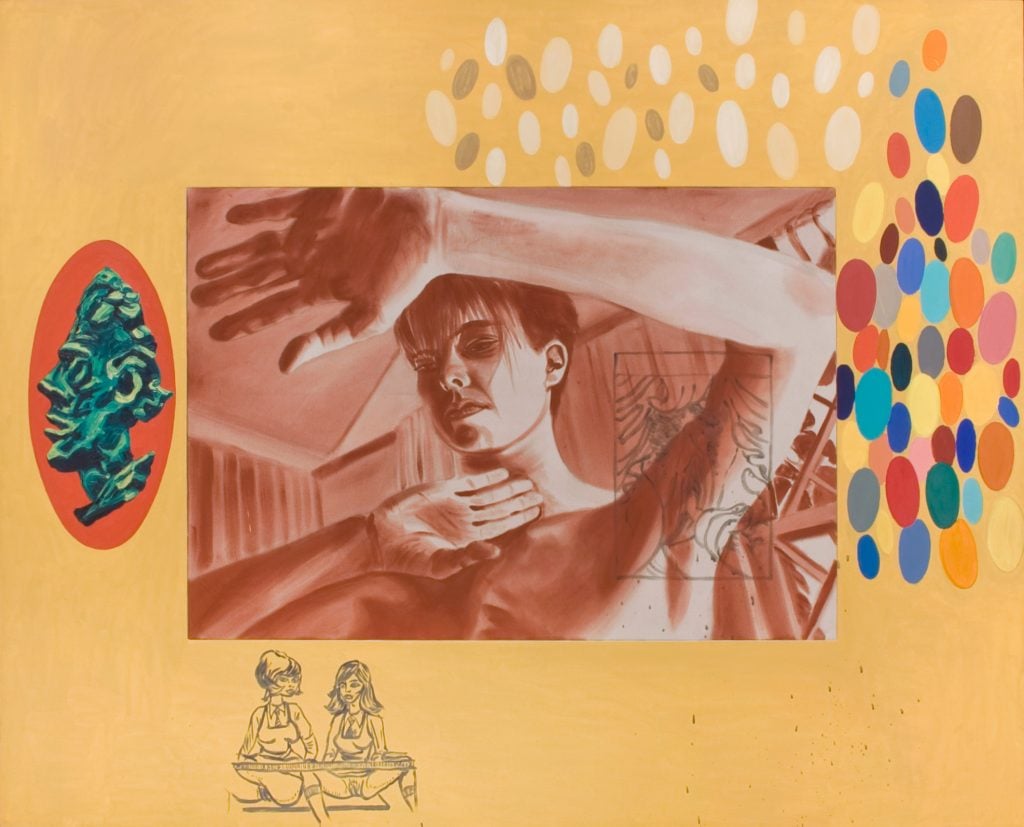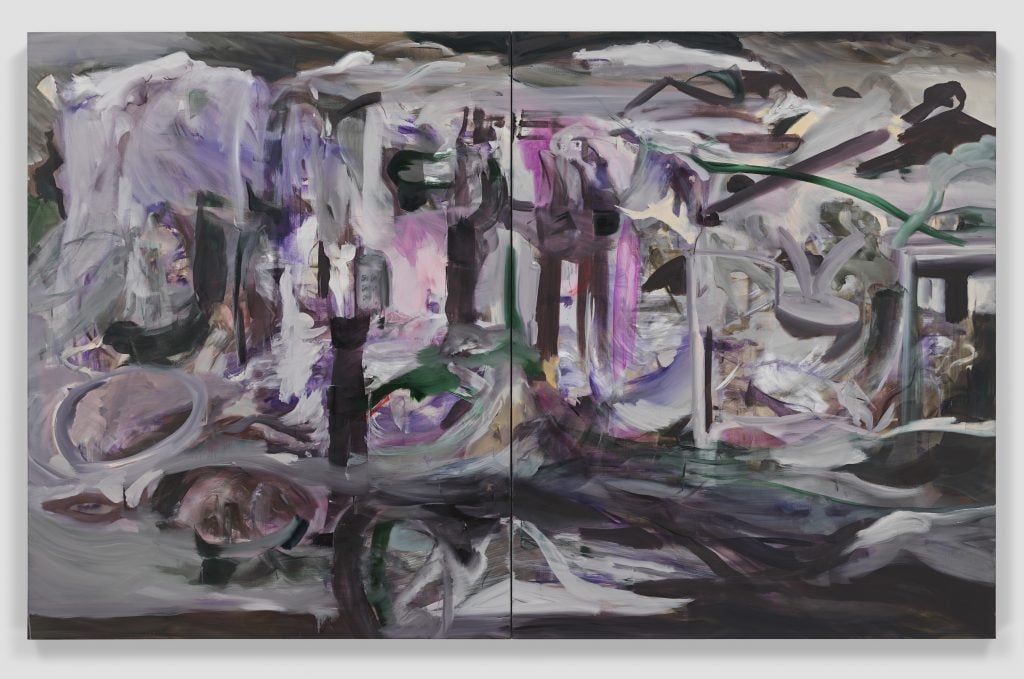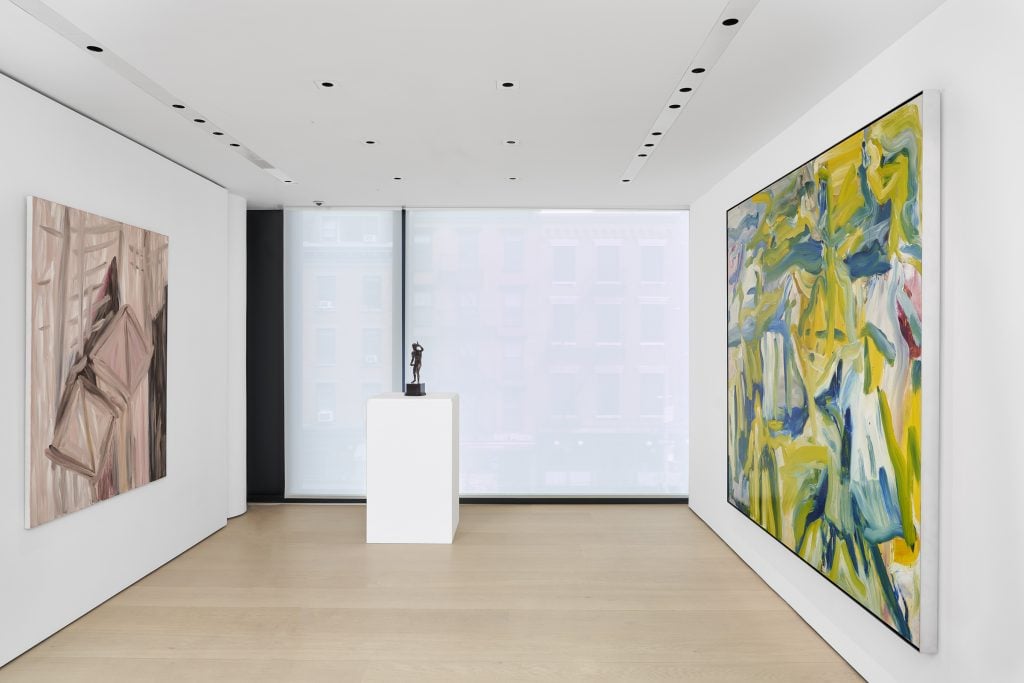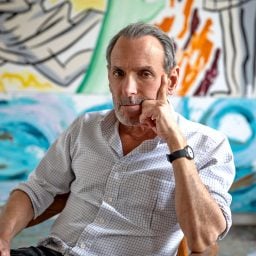For a show opening at the Hill Art Foundation in New York on April 21, the artist David Salle has curated a selection of paintings and sculptures by 35 artists. Drawing on history-spanning works by the likes of Peter Paul Rubens, Francis Bacon, Salman Toor, and Cecily Brown, “Beautiful, Vivid, Self-contained” considers the role of juxtaposition in our experience of art. Below, read an excerpt from the essay Salle wrote for the show’s catalogue.
The purpose of this exhibition is to consider the nature of affinity in painting. What perceptions about painting—from the inside out—bind diverse works together?
How can works of art be said to influence one another? How does aesthetic DNA become encoded in a painting; how is it passed on, and in what form?
What constitutes this influence? How to separate fashion, obvious and transitory, from the mysterious seeding of ideas that disperse like a dandelion puff in the wind?
Are there pictorial inventions that jump across historical divides to be reimagined in a wholly different time and place?
Is there such a thing as “aesthetic personality,” and can it be recognized in another context? Can a painting be said to have a nervous system? What is the psychic mapping that undergirds a pictorial attitude?
Perhaps the thorniest question of all: What is the relationship between intention and style, and is it quantifiable? Can artists of different styles—different surface attributes—have a similar relationship to their intention?

David Salle, Pavane (1990). © 2023 David Salle / VAGA at Artists Rights Society (ARS), New York. Courtesy of Skarstedt, New York.
In a lengthy essay published in the New Yorker in 2007, novelist Milan Kundera discusses the nature of accepted context versus actual influence. He surprises us with the claim that he does not wish to be characterized as an Eastern European writer. It may seem counterintuitive in our current identitarian age, but Kundera doesn’t want to be a “Czech writer.” (He even chafes at being compared to Franz Kafka.) For Kundera, the whole notion of national identity as a literary category is wrong.
[I]f we consider the history of the novel, it was to Rabelais that Laurence Sterne was reacting, it was Sterne who set off Diderot, it was from Cervantes that Fielding drew inspiration, it was against Fielding that Stendhal measured himself, it was Flaubert living on in Joyce, it was through Joyce that Herman Broch developed his own poetics of the novel, and it was Kafka who showed García Márquez the possibility to “write another way.”
How does aesthetic transference happen? Let’s pose the question in different terms. Two renowned composers on what they value, or don’t, in the work of earlier artists:
I don’t believe at all in the distinction between tonal and atonal music. I think the way to understand these things is that they are the result of magnetic forces between the notes, which creates a magnetic tension, an attraction or repulsion. —Thomas Adès
It’s not so much how [Beethoven] gets into things that’s interesting, it’s how he gets out of them. — Morton Feldman
There are many different ways to group paintings; the categories most often used don’t have much to do with a work’s “inside energy.” The presumed affiliations that are readily accessed are: generation (the new painters) or geography (new painting in Canada); appearance, or “style”; technology; or demographics, otherwise known as identity. Now, only a fool would say that context doesn’t matter. Of course, the time and place and the circumstances in which something was made matter greatly—they are in a way the markers of what is conceivable. But they fail to give an account of why certain things hold our attention, or why they affect us as they do. A painting is more than the sum of its parts. It is the way in which those parts are put together that moves us, even if we’re not aware of that dimension.
Anthropomorphizing paintings, projecting onto them the behavioral complexities that one might apply to people, may seem a kind of lunacy, but I’m willing to go out on a limb. Pictures are all equally self-evident; nothing is hidden. Whatever happens in a painting takes place, almost by definition, on the surface. How then can we say of a painting that it is obscure or enigmatic? Perhaps it’s a matter of timing. There are objects that by design reveal themselves to us all at once, and there are paintings whose stories unfold gradually, bit by atonal bit.

Cecily Brown, The use of blue in vertigo (2022). © Cecily Brown. Courtesy of Paula Cooper Gallery, New York. Photo: Genevieve Hanson.
Thomas Adès again, on the power of juxtaposition: “A thing becomes possible which makes another thing possible, which wouldn’t have been possible without it.”
The essential thing: Juxtaposition is the art of the possible. Visual art also adheres to Chekhov’s famous dramatic imperative: If there is a gun in the first act it must go off in the last. Certain things in a painting lay out the conditions for other things to occur. A painting can “import” elements from far away, from different aesthetic universes, if the painting itself has established a sufficiently elastic context. That which was previously impossible now begets the possible. The ways in which that is accomplished are myriad and unpredictable. For the time being, stretchy is good. Stretchy is how we live now. What we want is a stretchy Haggadah.
Can the works in this exhibition be said to speak to each other? What is the common language? Even if everything is a cultural construct, how one operates within that construct is the point of distinction.
To take just one example from our show, consider the way Charline von Heyl lays the structural groundwork in her painting for the unexpected; a surprising yet seemingly inevitable conflict between different pictorial conceptions, like the last act of our drama. This thing—this image, this mark, this color or shape, this interval—requires that thing (the fire burns the stick, the water puts out the fire). Creating that sense of inevitability is the art. This is not merely formalism—it’s the poetics of dynamism. Painting events are like notes in a melody, one note following another in specific intervals of both sound and time. An atonal sequence of notes, though unlikely to strike us as melodic, can still have wrong notes. How can you tell? Even an infant can recognize nonsense words when it hears them. A six-week-old baby (if born to English speakers) will recognize that “pilk” is not a word. There is a similar mechanism in painting, with the mind-bending difference that it is the artist herself who must make the grammatical rules, and also demonstrate in the painting how the rules are true. To make things even more complicated, not all “rules” are equally productive, and not all applications of those rules are equally meaningful.
The paintings in this exhibition, together with the sculptures, provide an occasion to consider the nature of aesthetic grammar and syntax, and to note the adherence to similar or overlapping grammatical rules. It’s not just that something looks like something else; it’s a question of how each picture establishes its own notion of the uses of painting grammar. It is in the complex nature of painting: The artist’s relationship to that grammar is the wellspring of their distinction.











